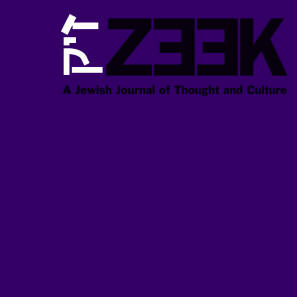 October 07
October 07
Rebuilding Israel’s Utopia
James Horrox
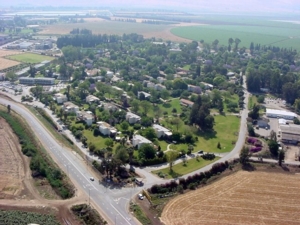 For nearly a century, the Israeli kibbutz represented one of the most celebrated success stories of the twentieth century socialist left. In this federated network of democratic, self-governing communities, the absence of private property, the negation of the wage system, and the assimilation of physical and white-collar labour successfully came together to create a society devoid of the inequalities and class hierarchies typical of market-driven societies. For many years, the kibbutzim thus managed to come closer to the egalitarian, anti-capitalist ideal than any other similar experiment.
For nearly a century, the Israeli kibbutz represented one of the most celebrated success stories of the twentieth century socialist left. In this federated network of democratic, self-governing communities, the absence of private property, the negation of the wage system, and the assimilation of physical and white-collar labour successfully came together to create a society devoid of the inequalities and class hierarchies typical of market-driven societies. For many years, the kibbutzim thus managed to come closer to the egalitarian, anti-capitalist ideal than any other similar experiment.
Fifty years after Martin Buber joyfully dubbed the kibbutz “an experiment that did not fail,” many observers of Israeli politics argue that it most certainly did. Recent years have seen the main body of the movement developing distinctly capitalist tendencies, with many of the settlements observed to be abandoning their original principles and evolving into heavily structured, hierarchically organised businesses. Irrespective of the veracity (or otherwise) of the many recent declarations of “the end of the kibbutzim,” few would dispute that the kibbutz of today bears little resemblance to the fiercely progressive settlements of the 1930s. Yet, as the kibbutz movement drifts ever further from its leftist roots, an increasing number of young Israelis are setting up their own communal projects based on the original kibbutz idea. Today, there are upwards of 1500 people living communally across Israel entirely unconnected to established kibbutzim, and this number is increasing steadily every year.
Shape Shifters
Approximately three quarters of these new “kibbutzniks” are members of the Tnuat Bogrim or “graduate movement” – groups of the youth movement Noar Oved ve’Lomed (Working & Student Youth Movement), otherwise known by its acronym NOAL, for whom the crises of the 1980s presented a significant problem. During those years, as kibbutz life was supposedly the ultimate fulfilment of NOAL’s ideology, the mainstream kibbutz movement’s abandonment of its original socialist values left graduates of the youth movement without a means of achieving either hagshama (self-realization) or any real forum for bringing about change in Israeli society. As a result, many NOAL graduates, like their contemporaries in the urban kibbutzim, sought to find an alternative outlet for their socialist Zionism to that offered by the mainstream kibbutzim. In the creation of new, more intimate settlements, they saw a way of achieving hagshama by practicing the youth movement’s ideology and values in their everyday lives. Given their history of helping build traditional kibbutzim, NOAL graduates created a new stream of small, consensus-based “anarcho-socialist” groups instead. As Habonim Dror’s (the Labor Zionist Youth Movement) James Grant-Rosenhead describes it:
The new NOAL graduates of the 1990s decided to cut out the kibbutz intermediary from their traditional symbiosis. They retained their small, intimate group life as separate new adult communities after they had graduated from the youth movement and the army. Instead of integrating into a traditional kibbutz, they took on responsibilities within the youth movement which were formerly undertaken by the kibbutz emissaries.
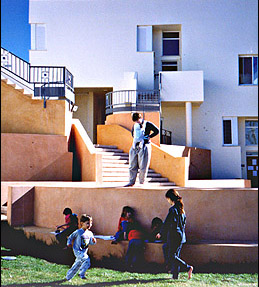 |
|---|
Founded in 1987, Kibbutz Tamuz in Beit Shemesh is one of Israel’s first urban kibbutzim. |
These new graduate groups formed their own communes, urban communities that are now scattered all over the country and are taking root in neighborhoods in every major Israeli town and city. Following the example of the NOAL Tnuat Bogrim groups, a number of other socialist Zionist youth movements have followed suit and formed their own graduate groups along similar lines, including Hashomer Hatzair’s Pelech and Machanot Ha’Olim's Na’aran. According to James, “[t]hese new groups are each trying to work towards social justice and equality in Israeli society, through a wide variety of educational and social initiatives on both local and national levels. The number and variety of these groups is growing each year, and the rate of growth is increasing too.”
These young Israeli progressives spent the 1990s gaining in strength and number, tentatively forming a rudimentary network amongst themselves, until in 2000 what had begun as a disparate miscellany of experimental communal projects came together under the umbrella of Ma’agal Hakvutzot (the Circle of Groups), an organization which may well represent the most significant of all the recent developments in the history of the kibbutz idea.
Ma’agal Hakvutzot
Ma’agal Hakvutzot, of which the Tnuat Bogrim groups are the backbone, is now arriving at a point where it can justifiably be described as a cohesive social movement. In the seven years since its inception, Ma’agal Hakvutzot has similarly cemented its status as a major player in Israel’s communal scene. The stated aims of the organisation are “to support the expansion of the communal idea in Israel, to nurture solidarity between groups, to promote important educational projects and to work towards an Israeli society, both on an economic and political level, based on social democratic values.” In achieving these aims, Ma’agal Hakvutzot incorporates a number of differing models of organisation based on the original principles of the kibbutz movement, including the Tnuat Bogrim groups and the more well established ”urban kibbutzim.”
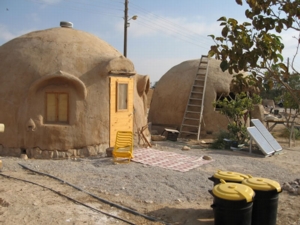 For the most part, the groups existing under the banner of Ma’agal Hakvutzot consist of between ten and forty individuals, and are embedded in towns and cities across the country. Nearly all of those involved are Israeli-born. However, Habonim Dror has four groups, set up by immigrants from the United Kingdom, the USA, Mexico and Australia, located in three different urban centres across the country. One of these, situated in the northern Israeli town of Migdal ha’Emeq some thirty miles south east of Haifa, is Kvutsat Yovel.
For the most part, the groups existing under the banner of Ma’agal Hakvutzot consist of between ten and forty individuals, and are embedded in towns and cities across the country. Nearly all of those involved are Israeli-born. However, Habonim Dror has four groups, set up by immigrants from the United Kingdom, the USA, Mexico and Australia, located in three different urban centres across the country. One of these, situated in the northern Israeli town of Migdal ha’Emeq some thirty miles south east of Haifa, is Kvutsat Yovel.
Composed of six Habonim graduates – four from England and two from North America – Yovel started life in Jerusalem in 1999 before moving to its present location. In June 2006 I was invited to meet one of Yovel’s founding members, Anton Marks, at the group’s apartment in Migdal ha’Emeq. Originally from Manchester, Anton made Aliyah to Israel in early 1999 and has been at the forefront of Ma’agal Hakvutzot’s endeavours since the organisation’s inception in 2000.
Anton describes the ideological inspiration behind Ma’agal Hakvutzot – an association that he and many others see as “the seeds of a new kibbutz movement” – as the intellectual progeny of the same combination of Judaism, socialism and anarchism that motivated the early kibbutz pioneers. Anton recounts his own group’s theoretical inspirations for getting involved with the movement: “From the socialist camp,” he says, “you’re talking about people like Marx and Engels. From the socialist-Zionist camp you’re talking about people like Moses Hess, Borochov, Syrkin and so on, and also of course the anarchist writers such as Kropotkin, Landauer, and Bakunin.” The influence of Martin Buber’s I-Thou philosophy, he says, remains central to the Ma’agal Hakvutzot groups’ ideology, with the “interpersonal relationships between I and Thou” being seen as a fundamental determinant of the nature of communal life.
The very fact that these new groups describe themselves as “kvutzot” rather than kibbutzim can itself be seen as a deliberate and conscious alignment with the intimacy of the small anarchistic settlements of the early years. According to Anton:
one of the things that is very clear to us is that we’re trying to build on something that’s come before us, to try and learn those lessons and not make those same mistakes again, but also trying to take the beautiful things that are there. So yes, there are things that are conscious, and there are things that are semantic. Kvutza has a different meaning to kibbutz; it denotes something much more intimate; we do use the term kibbutz as well, but in the context of ‘kibbutz of kvutzot.’
This phrase ”kibbutz of kvutzot” refers to the urban groups that have fused together to form larger communities, with Kibbutz Eshbal and Kibbutz Ravid serving as examples. Within these conglomerations, a heavy emphasis is placed on the importance of the unit of the individual kvutza within the larger structure, again to enable the intimate relationship building between individuals, which members see as the absolute sine qua non of community. By the same token, the Ma’agal Hakvutzot groups are similarly limited in terms of any ambitions they might have to expand: “The emphasis on smaller units” Anton explains, “is a lesson learned from the original kibbutz movement. Communities of hundreds of people cannot possibly reach the levels of trust, openness and understanding that a group of ten people can.”
As with the early kvutzot, it is this willingess to work together that enables these new communities to function the way that they do. Indeed, these groups can be seen to share many characteristics with their early twentieth century forerunners, and consciously so. Kehillatenu (Our Community), the collection of diaries of a group of Hashomer Hatzair immigrants from the settlement they established at Betanya Illit in 1919, occupies a central place in the Yovel communards’ long list of inspirations, and it is clear that the communal ethic embodied in the Second and early Third Aliyot settlements provides the ideological template for the new groups’ activities.
Each commune, for example, has a common purse, is directly democratic, adheres to consensus-driven internal decision-making processes and promotes shared responsibility for domestic duties, all of which are geared towards ensuring the maximum degree of political and material equality for group members. Within each community, Marx’s maxim “from each according to his ability to each according to his need” has been successfully realized. “As an example,” Anton elaborates, “my group has one bank account where all our earnings are deposited. We each have an ATM card to that one account and can withdraw money at our own discretion. It works purely on trust and a shared sense of responsibility [and] it has worked very well for nearly seven years.”
Producing Politics
But is this alone enough to define such communities as kibbutzim? Although obvious differences exist (the idea of a communal purse, for example), on the surface these communal living arrangements appear not far removed from those of any well-organised student flat or shared apartment. In other words, whereas the traditional kibbutz model is a full-cooperative built around industry and/or agriculture as its economic core, with no factory or farm, no date plantation, olive groves or any other ostensible means of production on which the settlement’s economy rests, the urban communities existing under the banner of Ma’agal Hakvutzot appear to fulfil few of the requisite criteria to meet the definition of kvutza, let alone kibbutz. As Anton emphasises, however, even in these new communities something is indeed “getting produced” even though it is perhaps not as immediately obvious as the factory or rolling farmland of a traditional kibbutz:
All of the different movements have officially established non-profit organisations, [in the form of] seminar centers.…In terms of what we do day-to-day, we work in teams with other people…involved in various educational and social projects. We raise money based on those projects; we carry out outside fundraising in all sorts of paces to help us to run those projects. The money that’s ‘fundraised’ comes into the movement, so again in terms of our financial arrangements we’re all getting according to our needs as opposed to what the outside market tells us that we’re worth. So although the interpersonal relationships are important, and we can improve those interpersonal relationships through what we do, I definitely see it as something very holistic.
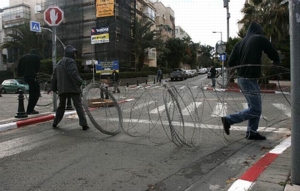 |
|---|
Urban activists in Tel Aviv acting in solidarity with Palestinians affected by the Security Wall |
Primarily located in developing towns housing a large proportion of Israel’s most underprivileged communities, the activists of Ma’agal Hakvutzot are directing the bulk of their attention towards promoting equality and social justice in Israeli society, focusing particularly on educational projects designed to remedy the immense flaws in what they believe to be a failing national education system. Anton states:
[T]he secondary education system in Israel has deteriorated in many areas, including a significant reduction in teaching hours and an increase in class sizes. In addition, the system leaves many students behind, more often than not students that come from an impoverished background (forty percent of all children in Israel are living under the poverty line). Western capitalism has bludgeoned its way into what once was one of the most progressive societies in the world. We run projects that encourage empowerment and coexistence, teach mutual aid, solidarity and tolerance.
A New Bottom Line
Modern-day Israel is a country in which racism and poverty are exacting an increasingly high toll from the country’s social fabric. No Israeli community better exemplifies this trend than the country's increasingly marginalized Arab population. Although technically guaranteed equal civil rights by Israel’s Basic Laws, Israeli Arabs effectively remain victims of institutionalised discrimination. For example, Arab towns and villages receive lower levels of government funding than their Jewish equivalents, while Arab citizens earn lower salaries than Jewish citizens. According to a report published in 1998 by the Adva Center for Equality and Social Justice, Ashkenazi Jewish employees’ pay is on average twice that of their Arab counterparts, and there is little to suggest that this gap is closing. Again, similar inequalities exist within the country’s education system; among the population as a whole, only 37.7% of students matriculate from high school, but the figure in the Arab community is even lower at 21.9%. While only 6% of students in affluent Jewish localities drop out of the education system before completing the 12th grade, in Arab areas the rate is 42%.
A large proportion of the work undertaken by the new generation of urban communards of Ma’agal Hakvutzot is concerned with remedying this situation, with many of the groups’ projects geared, as Anton says, towards encouraging empowerment and coexistence and nurturing the same relationships of solidarity and acceptance that enabled the early kibbutznikim to coexist relatively successfully with Palestinian Arabs during the pre-State period. Within each movement, teams consisting of members from different groups work together on a whole host of projects, including running a boarding school for disadvantaged youth, teaching English to Arab children, creating after-school clubs, starting schools, legally representing the rights of working youth, and establishing seminar centres where Palestinian and Israeli Jews can educate one another about their respective cultures.
As for Yovel itself, “nearly all of us work in education in one way or another,” says Anton, “These projects are run by the Kibbutz of Kvutzot in Migdal Ha’Emeq and Nazareth Illit, of which the Yovel group is a part, although living in the city enables one member to work in his chosen field; computers. No one can tell the individual where to work”.
All this may seem a far cry from the agrarian philosophy of the early Zionist pioneers, but necessarily so, for it goes without saying that the context in which the new groups are operating is vastly different from the inhospitable conditions that the early immigrants found on their arrival in Palestine. 21st century Israel is one of the most advanced industrialized nations on the planet, and with this comes a whole new set of problems very different to those faced by the first kibbutzniks.
As Anton explains, “in the old days of the movement the bottom line was about creating a country, and creating a new human being, building an economy based on agriculture, settling the land, defending the borders. Those needs are not the same – the needs today are more the social needs of the country, narrowing those gaps, and recognizing that these are the needs of the country in the twenty-first century….We see the ways of dealing with those needs as being based on the same values – it’s just the methods that are slightly different.”
The traditional kibbutz has not ”failed.” It has, however, encountered serious problems which have not only led to an increasingly marked disconnection from the radical, anti-market ideas with which the  movement was initially conceived, but also to a corresponding weakening of the kibbutz movement’s relevance to mainstream Israelis. This being the case, the groups of Ma’agal Hakvutzot constitute an important new stage in the development of the kibbutz, a stage whose successful reconnection with the small-group ethos of the kibbutzim’s early years marks Ma’agal Hakvutzot as an entirely modern organisation whose concerns and priorities betray an increasing unease with the present direction of Israeli society.
movement was initially conceived, but also to a corresponding weakening of the kibbutz movement’s relevance to mainstream Israelis. This being the case, the groups of Ma’agal Hakvutzot constitute an important new stage in the development of the kibbutz, a stage whose successful reconnection with the small-group ethos of the kibbutzim’s early years marks Ma’agal Hakvutzot as an entirely modern organisation whose concerns and priorities betray an increasing unease with the present direction of Israeli society.
James Horrox is the author of A Living Revolution: Anarchism in the Kibbutz Movement, forthcoming in 2008 from AK Press. He is a regular contributor to numerous independent publications and is currently working on his postgraduate research at Manchester Metropolitan University.
